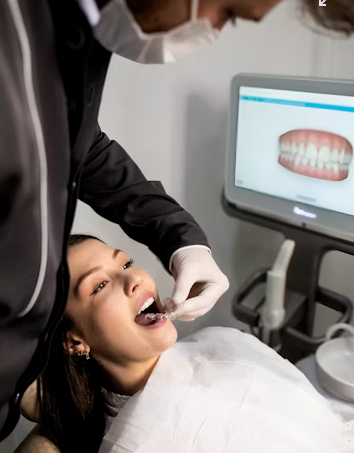
@ShahidNShah


Modern removable prosthodontics has shifted away from traditional hard acrylic and bulky metal designs toward soft, patient-friendly options. At the heart of this evolution are flexible partial dentures, a solution designed to make missing teeth feel less like a problem and more like a thing of the past. In this article, you’ll learn about the latest materials, how to maintain them, when to replace them, and how they’re made to look and feel natural.
Old-style dentures used to be hard and uncomfortable. Today, newer materials like Valplast and DuraFlex feel softer and work better. They gently fit the shape of your mouth, don’t have sharp edges, and are less likely to get stained or damaged by moisture.
To care for them:
With the right home routine, these dentures keep their flexibility and look for years.
Thanks to digital tools and at-home kits, getting a perfect fit is now easier and more affordable. You can order a free impression kit and follow the step-by-step guide to capture your bite in the comfort of home at Revived Smiles. Once returned, licensed dental technicians use FDA-approved materials to craft a custom denture that matches your gum and tooth shade.
These dentures are wire-free, with no metal clasps, so they gently hug your remaining teeth. The result isn’t just more comfort; it’s also better-looking, with clasps that blend in and feel natural. Improved fit means better chewing, clearer speech, and a lot more confidence when you laugh or talk.
Just like your mouth changes daily, dentures wear out too. Even the best materials eventually lose bite, or your gums and bone under them shift. Most flexible partial dentures last between 5 and 7 years with good care. You may need replacement sooner if you notice:
Routine self-checks and occasional exams can help you spot these signs early and act before bigger issues arise.
Today’s dentures are designed in a high-quality dental lab, not a backroom. After you take your impression, licensed dentists review the mold, select tooth and gum shade, and approve the final design. This ensures consistent color, fit, and an overall polished look.
Clear or translucent options make the device even more invisible, especially useful when replacing front teeth. Smooth, seamless surfaces minimize places where food and bacteria can hide, making it easier to brush off buildup. Better hygiene means less risk of odor or gum infections, so you can keep a healthy mouth even without live visits to a dentist.
Flexible partial dentures are more than just a tooth replacement, they’re a step forward in comfort, convenience, and aesthetics. With advanced materials like Valplast and DuraFlex, custom shade matching, and careful fabrication, these modern devices deliver lasting, natural results. They’re easy to care for, align with your changing mouth, and offer a gentle, confident return to smiling, speaking, and eating well.
By embracing this modern approach, patients and clinicians can enjoy a higher standard of removable prosthodontic care, one where flexibility, function, and form come together seamlessly.

The pursuit of brighter, whiter teeth has become an increasingly common aspiration, particularly in urban settings where aesthetics often intersect with professional and social confidence. In teeth …
Posted Jun 24, 2025 Dental Care Dentistry
Connecting innovation decision makers to authoritative information, institutions, people and insights.
Medigy accurately delivers healthcare and technology information, news and insight from around the world.
Medigy surfaces the world's best crowdsourced health tech offerings with social interactions and peer reviews.
© 2025 Netspective Foundation, Inc. All Rights Reserved.
Built on Dec 16, 2025 at 1:07pm